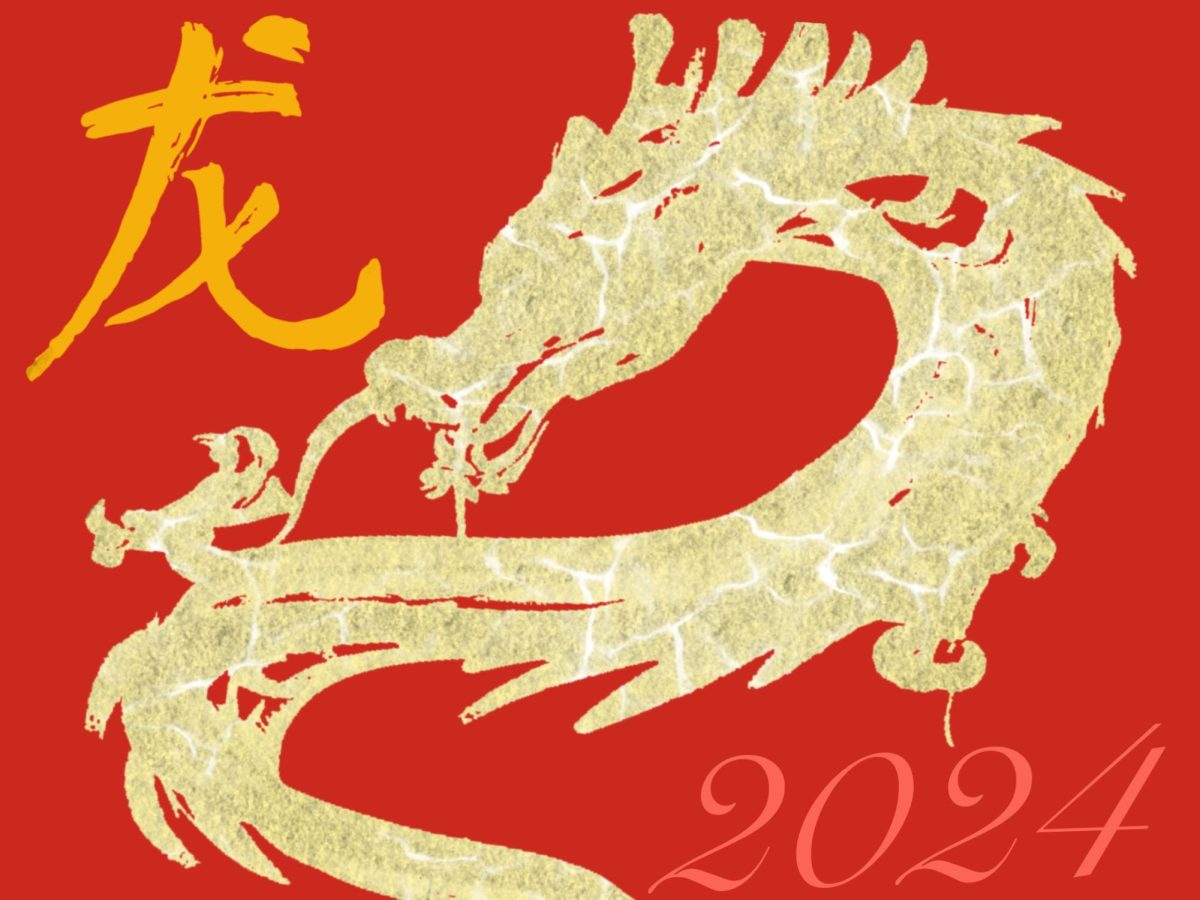After the second new moon, many Asian people gather with their family and friends, celebrating the coming of a new year. The 15-day celebration includes many activities that will bring luck, fortune, and prosperity to all, celebrating the Lunar New Year.
Historical context
The origin of Chinese New Year, more commonly known as the Spring Festival, is shrouded in many myths and legends. A popular tale is of the mythical beast 年(Nián), who came every New Year’s Eve, eating livestock, crops, and even people. To prevent 年 from attacking the villages, people started leaving food for it. It is also said that 年 is afraid of loud noises and the color red. Thus crackling bamboo was used to scare it, and red lanterns as well as scrolls were placed on windows and outside houses to keep 年 away from homes.
According to LamMuseum, although the exact date of Chinese New Year is unknown, it has a recorded history of around 3,500 years. It’s believed to have originated around the Shang, Han, and Zhou Dynasties. In the Shang Dynasty, people held sacrifices and ceremonies at the beginning and the end of a year. Later in the Zhou Dynasty, they changed the name to 年. During the Han Dynasty, the date of the festivals was changed to the first date of the first month in the lunar calendar. Around the Han Dynasty, crackling bamboo sticks became popular to use during the festivals. From the Wei and Jin Dynasties to the Tang, Song, and Qing Dynasties, the traditions they practiced resembled the modern celebrations of the Lunar New Year.
Traditional Celebrations
On New Year’s Eve, families clean and sweep their homes, removing the bad luck and bringing in the new. The house is also decorated with red lanterns and red paper cutouts on the windows and doors with “scrolls of fortune” hanging from the walls. Red envelopes are distributed to the children from family members, aunts, and uncles. Red is commonly used in clothing and houses during New Year as a symbol of prosperity, luck, and fortune. Some families also leave food out for the gods and deities (usually a tiny statue in their home) for them to bless it before they can eat it on New Year’s Day. In China, many temples are open and visited for luck and to honor the gods and ancestors.
During New Year, families gather around the table and celebrate the festivities and their ancestors. A feast is thrown with many kinds of foods, varying from region to region, ranging from noodles, different rice dishes, dumplings, sticky rice balls, and more. Some of the most popular foods are niángāo(年糕) and jiǎozi(饺子) or shuǐjiǎo(水饺) which bring good luck and prosperity for the year.
The last day of the Chinese New Year is called the Lantern Festival (yuánxiāo jié) where bright lanterns are hung outside each house to help the dead find their way home. A festival and parade are also held, showcasing a myriad of bright-colored lanterns in different shapes, sizes, and colors. Some have Chinese zodiac animals, historical figures, and the different gods & deities.
LamMuseum said Chinese New Year falls on the second new moon after the winter solstice on December 21. Every year is different according to the lunar calendar, but it falls somewhere between late January to early February. January 1st is the beginning year for the dragon. This year, the Chinese New Year falls on February 10th, 2024.
Year of the Dragon
The dragon is a part of the 12 animals in the Chinese zodiac. The Chinese zodiac, or shengxiao, refers to the 12 animals that measure time cycles. The animals are determined by the Lunar Year in which you were born. Unlike the zodiacs which use months, they determine it by which year. (here is a link to see yours)
This year, 2024, is the Year of The Dragon. The Dragon is said to be charismatic, intelligent, confident, powerful, naturally lucky, and gifted, putting the best in everything they do with their high standards. ChinaHighlights describes the Dragon to symbolize power, nobleness, honor, luck, and success in traditional Chinese culture. It is a supernatural being with no parallel for talent and excellence, being a key symbol at many weddings and homes in Chinese culture.
Chinese New Year VS Lunar New Year
The most common misconception that people make is that Lunar New Year is the same as Chinese New Year. Although Chinese New Year is a part of Lunar New Year, the terms are very different. Lunar New Year represents the celebrations and festivals of all Asian countries and those of Asian descent. Chinese New Year commonly known as the Spring Festival in China, directly represents China and its celebration during the Lunar New Year. For example in Korea, it’s referred to as Sellol, and in Vietnam, it’s called Tết.
Lunar New Year’s is a huge celebration for many Asians, often like the holidays like Christmas in the U.S. where it isn’t widely celebrated in Asian countries. If you have a friend who celebrates Lunar New Year, wish them a happy New Year! Maybe they will give a red envelope too.


